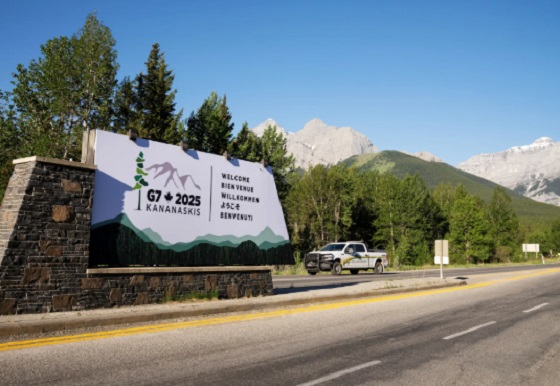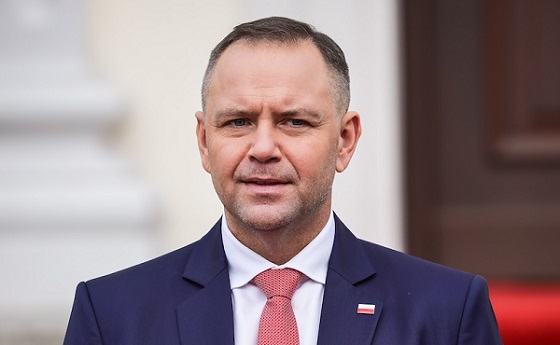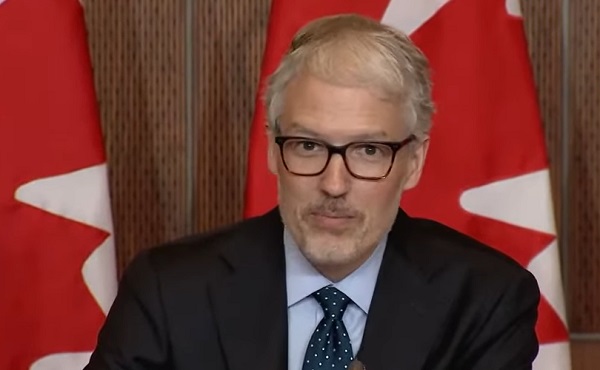Uncategorized
New landslide kills 15, buries houses in Philippines

NAGA, Philippines — A massive landslide buried dozens of homes near a central Philippine mountain Thursday, killing at least 15 people and sending rescuers scrambling to find survivors after some sent text messages pleading for help.
The slide surged down on about 30 houses in two rural villages after daybreak in Naga city in Cebu province, Roderick Gonzales, the city police chief, told The Associated Press by telephone as he helped supervise the search and rescue. Seven injured villagers were rescued from the huge mound of earth and debris.
Some victims still managed to send text messages after the landslide hit, Gonzales said, adding elderly women and a child were among the dead.
Naga city Mayor Kristine Vanessa Chiong said by telephone that at least 64 people remained missing.
“We’re really hoping we can still recover them alive,” she said.
The landslide hit while several northern Philippine provinces were still dealing with deaths and widespread damage wrought by Typhoon Mangkhut, which pummeled the agricultural region Saturday and left at least 88 people dead and more than 60 missing. A massive search was still underway for dozens of people feared dead after landslides in the gold-mining town of Itogon in the north.
Cebu province was not directly hit by Mangkhut but the massive typhoon helped intensify monsoon rains across a large part of the archipelago, including the central region, where Naga city lies about 570
Rescuers there were treading carefully in small groups on the unstable ground to avoid further casualties.
“We’re running out of time. The ground in the area is still vibrating. We’re striking a balance between intensifying our rescue efforts and ensuring the safety of our rescuers,” Naga city Councilor Carmelino Cruz said by phone.
Cristita Villarba, a 53-year-old resident, told AP by phone that her husband and son were preparing to leave for work when the ground shook and they were overwhelmed by a roar.
“It was like an earthquake and there was this thundering, loud banging sound. All of us ran out,” Villarba said, adding she, her husband and three children were shocked but unhurt.
Outside, she saw the house of her elderly brother, Lauro, and his family was buried in the landslide.
“Many of our
More than a dozen people live in her brother’s home, mostly his family and grandchildren, she said, adding that many small houses in her community got hit.
A few days ago, Villarba said she felt sorry for the landslide victims in the country’s north.
“I had no idea we will be the next,” she said.
It’s not clear what set off the landslide, but some residents blamed limestone quarries, which they suspect may have damaged and caused cracks in the mountainside facing their villages. Villarba said a light rain stopped when the landslide hit and there was no rain on Wednesday.
The quarry nearest the landslide-hit villages was abandoned about a year ago, but a company still runs a government-authorized quarry not far away and villagers also profit from the limestone business, Angeline Templo, an assistant to the mayor, said by phone.
More than 300 villagers were evacuated for safety as search and rescue work continued, Templo said.
Naga is a coastal city with a population of more than 100,000.
___
Associated Press writer Jim Gomez contributed to this report.
Bullit Marquez And Joeal Calupitan, The Associated Press
Uncategorized
CNN’s Shock Climate Polling Data Reinforces Trump’s Energy Agenda


From the Daily Caller News Foundation
As the Trump administration and Republican-controlled Congress move aggressively to roll back the climate alarm-driven energy policies of the Biden presidency, proponents of climate change theory have ramped up their scare tactics in hopes of shifting public opinion in their favor.
But CNN’s energetic polling analyst, the irrepressible Harry Enten, says those tactics aren’t working. Indeed, Enten points out the climate alarm messaging which has permeated every nook and cranny of American society for at least 25 years now has failed to move the public opinion needle even a smidgen since 2000.
Appearing on the cable channel’s “CNN News Central” program with host John Berman Thursday, Enten cited polling data showing that just 40% of U.S. citizens are “afraid” of climate change. That is the same percentage who gave a similar answer in 2000.
Dear Readers:
As a nonprofit, we are dependent on the generosity of our readers.
Please consider making a small donation of any amount here.
Thank you!
Enten’s own report is an example of this fealty. Saying the findings “kind of boggles the mind,” Enten emphasized the fact that, despite all the media hysteria that takes place in the wake of any weather disaster or wildfire, an even lower percentage of Americans are concerned such events might impact them personally.
“In 2006, it was 38%,” Enten says of the percentage who are even “sometimes worried” about being hit by a natural disaster, and adds, “Look at where we are now in 2025. It’s 32%, 38% to 32%. The number’s actually gone down.”
In terms of all adults who worry that a major disaster might hit their own hometown, Enten notes that just 17% admit to such a concern. Even among Democrats, whose party has been the major proponent of climate alarm theory in the U.S., the percentage is a paltry 27%.
While Enten and Berman both appear to be shocked by these findings, they really aren’t surprising. Enten himself notes that climate concerns have never been a driving issue in electoral politics in his conclusion, when Berman points out, “People might think it’s an issue, but clearly not a driving issue when people go to the polls.”
“That’s exactly right,” Enten says, adding, “They may worry about in the abstract, but when it comes to their own lives, they don’t worry.”
This reality of public opinion is a major reason why President Donald Trump and his key cabinet officials have felt free to mount their aggressive push to end any remaining notion that a government-subsidized ‘energy transition’ from oil, gas, and coal to renewables and electric vehicles is happening in the U.S. It is also a big reason why congressional Republicans included language in the One Big Beautiful Bill Act to phase out subsidies for those alternative energy technologies.
It is key to understand that the administration’s reprioritization of energy and climate policies goes well beyond just rolling back the Biden policies. EPA Administrator Lee Zeldin is working on plans to revoke the 2010 endangerment finding related to greenhouse gases which served as the foundation for most of the Obama climate agenda as well.
If that plan can survive the inevitable court challenges, then Trump’s ambitions will only accelerate. Last year’s elimination of the Chevron Deference by the Supreme Court increases the chances of that happening. Ultimately, by the end of 2028, it will be almost as if the Obama and Biden presidencies never happened.
The reality here is that, with such a low percentage of voters expressing concerns about any of this, Trump and congressional Republicans will pay little or no political price for moving in this direction. Thus, unless the polls change radically, the policy direction will remain the same.
David Blackmon is an energy writer and consultant based in Texas. He spent 40 years in the oil and gas business, where he specialized in public policy and communications.
Uncategorized
Kananaskis G7 meeting the right setting for U.S. and Canada to reassert energy ties


Energy security, resilience and affordability have long been protected by a continentally integrated energy sector.
The G7 summit in Kananaskis, Alberta, offers a key platform to reassert how North American energy cooperation has made the U.S. and Canada stronger, according to a joint statement from The Heritage Foundation, the foremost American conservative think tank, and MEI, a pan-Canadian research and educational policy organization.
“Energy cooperation between Canada, Mexico and the United States is vital for the Western World’s energy security,” says Diana Furchtgott-Roth, director of the Center for Energy, Climate and Environment and the Herbert and Joyce Morgan Fellow at the Heritage Foundation, and one of America’s most prominent energy experts. “Both President Trump and Prime Minister Carney share energy as a key priority for their respective administrations.
She added, “The G7 should embrace energy abundance by cooperating and committing to a rapid expansion of energy infrastructure. Members should commit to streamlined permitting, including a one-stop shop permitting and environmental review process, to unleash the capital investment necessary to make energy abundance a reality.”
North America’s energy industry is continentally integrated, benefitting from a blend of U.S. light crude oil and Mexican and Canadian heavy crude oil that keeps the continent’s refineries running smoothly.
Each day, Canada exports 2.8 million barrels of oil to the United States.
These get refined into gasoline, diesel and other higher value-added products that furnish the U.S. market with reliable and affordable energy, as well as exported to other countries, including some 780,000 barrels per day of finished products that get exported to Canada and 1.08 million barrels per day to Mexico.
A similar situation occurs with natural gas, where Canada ships 8.7 billion cubic feet of natural gas per day to the United States through a continental network of pipelines.
This gets consumed by U.S. households, as well as transformed into liquefied natural gas products, of which the United States exports 11.5 billion cubic feet per day, mostly from ports in Louisiana, Texas and Maryland.
“The abundance and complementarity of Canada and the United States’ energy resources have made both nations more prosperous and more secure in their supply,” says Daniel Dufort, president and CEO of the MEI. “Both countries stand to reduce dependence on Chinese and Russian energy by expanding their pipeline networks – the United States to the East and Canada to the West – to supply their European and Asian allies in an increasingly turbulent world.”
Under this scenario, Europe would buy more high-value light oil from the U.S., whose domestic needs would be back-stopped by lower-priced heavy oil imports from Canada, whereas Asia would consume more LNG from Canada, diminishing China and Russia’s economic and strategic leverage over it.
* * *
The MEI is an independent public policy think tank with offices in Montreal, Ottawa, and Calgary. Through its publications, media appearances, and advisory services to policymakers, the MEI stimulates public policy debate and reforms based on sound economics and entrepreneurship.
As the nation’s largest, most broadly supported conservative research and educational institution, The Heritage Foundation has been leading the American conservative movement since our founding in 1973. The Heritage Foundation reaches more than 10 million members, advocates, and concerned Americans every day with information on critical issues facing America.
-

 International21 hours ago
International21 hours agoPoland’s president signs new zero income tax law for parents with two children
-

 Alberta1 day ago
Alberta1 day agoDiploma Exams Affected: No school Monday as ATA rejects offer of enhanced mediation
-

 International22 hours ago
International22 hours agoAustralian territory bans men from women’s prisons in national first
-

 Business11 hours ago
Business11 hours agoFord’s Whisky War
-

 Focal Points10 hours ago
Focal Points10 hours agoTrump Walks Back His Tomahawk Tease from Zelensky
-

 Automotive8 hours ago
Automotive8 hours ago$15 Billion, Zero Assurances: Stellantis Abandons Brampton as Trudeau-Era Green Deal Collapses
-

 Business1 day ago
Business1 day agoFederal Budget 2025: A responsible media would ensure Canadians know about the dismal state of federal finance
-

 Business1 day ago
Business1 day agoCanada has an energy edge, why won’t Ottawa use it?






